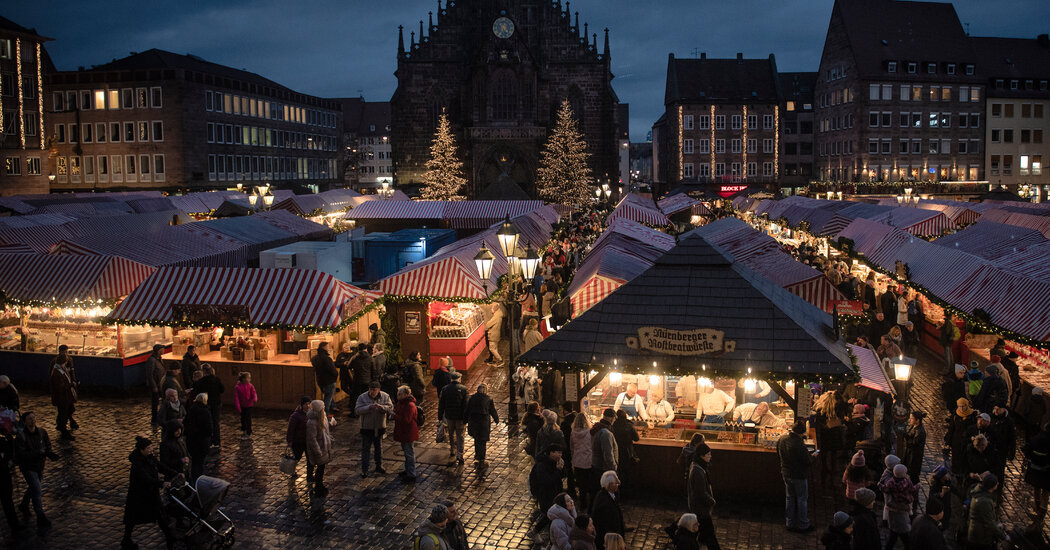NUREMBERG, Germany — Nativity scenes carved of wood, ornaments, candles, children’s toys, gingerbread cookies in myriad shapes, sausages and mulled wine sipped in painted glass mugs.
Few places in Germany feel as Christmassy this time of year as the Nuremberg Christkindlesmarkt, one of the oldest and most storied festive markets in the country.
After the Covid pandemic stole two holiday seasons, the red-and-white-roofed booths, rich and spicy odors of treats, and mulled wine-enhanced cheer are back to entice Nurembergers and tourists to a central square in the city again this year. City historians say the market has formed annually since at least 1628, with breaks for the pandemic and for several years right after World War II.
“It’s not really a normal Christmas without the market,” said Ursula Köbl, 73, a local who claims she never missed the event until 2020, when it was first shut down to prevent the spread of the coronavirus.
But even before this market closes on Christmas Eve at 2 p.m. — as tradition demands — vendors predict they will not make out as well as they did in 2019. For the first time in modern history, more than a dozen vendors gave up their prized spots because of high costs and staff shortages, leaving gaps in the lineup of stalls that looked like missing teeth in an otherwise cheerful smile.
Long an integral part of the social calendar, Germany’s roughly 500 Christmas markets have renewed importance as weather vanes of the national mood. Many of them are running again without any Covid restrictions, but until they opened at the end of November, it remained uncertain whether the economic situation and a looming energy crisis would sour the mood.
Towns and cities across Germany have been darkened because of new energy-saving rules that prohibit the exterior lighting of advertisements, public buildings and even landmarks. Amid the cuts, the markets — tiny temporary villages made up of cloth, wood and strings of energy-efficient LED lights — face a challenge to encourage commerce to thrive. First indications suggest, with qualifications, that they are succeeding. While people tend to be spending less at the stalls, the crowds are as big and enthusiastic as ever.
“Many of us missed this market,” said Marcus König, Nuremberg’s mayor. “It’s just a balm for our dented souls after two and a half years of pandemic during which there was very little cultural life.”
The coronavirus has had a detrimental effect on city…
Click Here to Read the Full Original Article at NYT > Travel…
